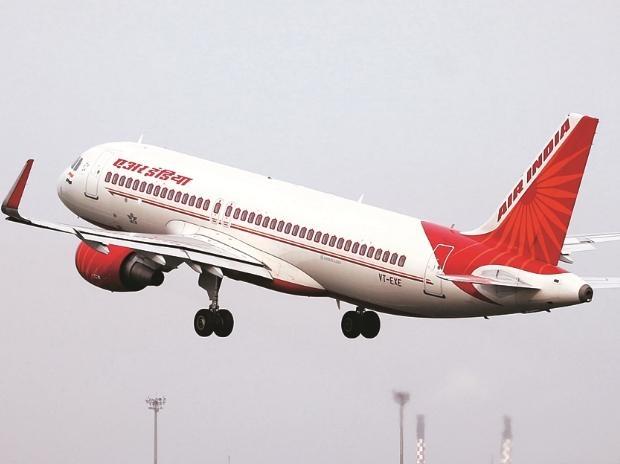The Air India Sale Fiasco is the Strongest Case for Why It Must Not Be Sold

Image Coutesy: Business Standard
“And that’s the great joy of a privatisation decision. We actually find out what the value of an organisation is. If it has a positive value then we gain that positive value and if it doesn't then the organisation shouldn’t exist at all. Thus if no one wants to buy Air India then Air India should not exist.”
This is the logical sleight of hand — evidenced above from an article in Forbes magazine — that the neoliberal messiahs of privatisation play to pressure a country into selling off its public assets for private profiteering. It is clear who the “we” are in the phrase “then we gain that positive value”.
Now that the deadline of May 31 (extended already from the earlier May 14) has passed and not a single private company came forward to show interest — by submitting the Expression of Interest (EoI) — in bidding for Air India, the country’s debt-laden “national carrier”, the Modi government is all set to review the sale proposal and conditions.
Let us again take a look at the offer being made.
On 28 March, the BJP-led NDA government announced the sale of 76% equity share capital of Air India (AI) held by the Government of India — along with 100% equity stake in AI’s subsidiary Air India Express Limited and the 50% equity stake in joint venture Air India SATS Airport Services.
Now, AI currently has a total debt of more than Rs 52,000 crore and thus, has been suffering net losses — but it has been making increasing operational profits for the past three years (Rs 298 crore in 2016-17) and has never defaulted in its loan repayment. The government has already sweetened the deal for the prospective private owners by vowing to bear half of the debt burden.
However, to understand the long-term game of privatisation, one must recall how the government-owned airline, which was the market leader until a little over a decade ago, was deliberately destroyed, so as to pave the way for the private sector, propped by the argument that AI is loss-making and inefficient, etc.
The steps to destruction included merging AI with the domestic Indian Airlines (both of which were market leaders at the time), giving away of lucrative routes to private airlines and by buying an excessive number of aircrafts at colossal loans — a move that was designed to be the nail in the airline’s pre-planned coffin.
In fact, around Rs 22,000 crore of AI’s debt is due to the excessive aircrafts that were bought unnecessarily under civil aviation minister Praful Patel during the UPA-I regime.
The Congress-led UPA government pretty much forced AI to place orders for 68 aircrafts at a cost of Rs 50,000 crore, at a time when the company’s annual turnover was Rs 7,000 crore. This was also pointed out and criticised by a report of the Comptroller and Auditor General (CAG) of India in 2011.
The first point here is that the mess that AI, a Central Public Sector Enterprise (CPSE), finds itself in is not because of its operational inefficiency or the fault of its management and employees, but because of deliberate government policy.
As for value, despite the attempts at destruction, AI continues to have a market share of around 17% in the overseas services from India, which is the highest among Indian carriers. It also holds extremely lucrative slots at prime airports and traffic rights internationally.
It has a fleet of 115 aircrafts and more than 6,200 slots for domestic and international flights. Importantly, it has been making rising operational profits for the past three years.
Now as the lobby of private companies plays hardball and mounts pressure on the government to further relax the conditions of the sale — mainly the debt burden and to some extent, the 24% share that the government plans to retain — will the Modi government finally decide to write off all of AI’s debt?
Speaking to Newsclick, Tapan Sen, general secretary of CITU, said, “It would be criminal if the government writes off the remaining debt burden for the private buyers. Already the government has reduced the debt burden to the tune of Rs 30, 000 crore. The government has no right to write off the loan in order to sell it to the private companies. If that relief, even only partially, is offered to Air India instead, the airline will come back to full profit within two years.”
Sen pointed out that the AI loans are not NPAs (non-performing assets). “While the likes of Adani, Ambani, Mallya et cetera have piled up lakhs of crores of loans and are not paying in time or running away altogether, Air India has not defaulted in the debt servicing even for a day, despite its difficult situation. So Air India’s loan burden is in no way NPA (non-performing assets) for the banks, and the government has got no right to write off the debt. By writing off the debt, the government will not pass on money to the banks’ exchequer. Loans that are not NPAs are being accounted for in the bank’s balance sheet and it is not reflected in the loss of the banks. The loss that banks are facing in the balance sheet, AI loans do not surface in that, but the corporate loans that are NPAs do,” he said.
“The debt burden is not the airline’s fault, but is due to government policy that is hostile to public-sector companies. I can talk about BHEL, Hindustan Aeronautics Limited, and many other companies that are now targeted for strategic sale, where jobs are being taken away and given to multinational companies. This is how this government is mortgaging the national interest to the multinational and foreign forces,” Sen added.
Indeed, there have already been demands from the private players that the government remove the employee protection clause, which is minimal to begin with, offering a lock-in period of one year during which the new owners cannot fire the existing employees, who are around 27,000 in number.
The new owners would be left with a debt burden of more than Rs 33,300 crore, comprising around Rs 24,600 crore of debt and current liabilities of over Rs 8,800 crore.
As Sen said, Air India will turn around to full profitability on its own within two years, if the government writes off the debt even partially for the company, instead of the buyers.
One must remember that the strongest argument in favour of retaining AI in the public sector is that once AI is privatised, there will be no public-sector airlines left in the country, leading to the absolute monopoly of the private airlines in the air travel market.
And given that private companies operate with the sole aim of increasing their profits while cutting down their costs (remember the “we” in the opening quote), this means there would be no checks on the profiteering ways of the private airlines, in the absence of a public-sector alternative.
The biggest losers here will be the public — the customers from the range of middle classes who make use of air travel. Because it will be next to impossible to keep any check on prices (no the market will not automatically take care of that) and on the quality of the service, etc. Most importantly, private airlines prefer to stay away from loss-making routes — routes that connect some of the remotest areas in the country, routes that are only serviced by the government airlines. Who will take of those areas in the country?
So much for the fallacious argument — deliberately propounded and aggressively pushed, of course — about Air India being a drain on the taxpayers’ money to make a case for ‘disinvestment’. Privatisation has nothing to do with the value of an organisation, but only the value that the private proprietors can extract for themselves.
Despite all of this, however, it is highly likely that the Modi government will crawl before the private companies, as it has in the past, tried to sell off Air India.
Get the latest reports & analysis with people's perspective on Protests, movements & deep analytical videos, discussions of the current affairs in your Telegram app. Subscribe to NewsClick's Telegram channel & get Real-Time updates on stories, as they get published on our website.






















